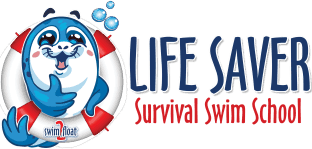
Introducing your baby to the water can be a joyful and rewarding experience. Swimming lessons for infants not only enhance their physical development but also foster a lifelong comfort and respect for the water. This guide provides parents with everything they need to know to make the most of their baby swim lessons, ensuring safety, fun, and meaningful bonding.
Why Start Swim Lessons Early?
Infant swim lessons are designed to introduce babies to the water in a safe and controlled manner. Research suggests that early exposure to swimming can have numerous benefits:
1. Physical Development: Swimming enhances motor skills, muscle strength, and coordination in infants. Movements like kicking and reaching stimulate their overall development.
2. Cognitive Growth: Babies exposed to water activities often experience improved cognitive and sensory processing due to the unique environment.
3. Bonding: Swim lessons provide a wonderful opportunity for parents and babies to build trust and strengthen their bond through shared activities.
4. Water Safety: Early familiarity with water reduces the fear of swimming and establishes foundational safety skills.
When to Start Baby Swim Lessons
The ideal time to introduce your baby to the water is when they are about six months old. At this age, they typically have better head and neck control, which makes water activities safer. However, even newborns can benefit from gentle water play at home in a shallow bath or small pool.
Be sure to consult your pediatrician before enrolling your baby in swim lessons, particularly if they have any medical conditions or concerns.
Choosing the Right Swim Program
Selecting a suitable swim program is crucial for a positive experience. Here are some factors to consider:
1. Qualified Instructors:
Ensure the instructors are certified in infant swim teaching and CPR.
Look for programs that emphasize gentle, play-based techniques.
2. Class Size:
Smaller class sizes allow for more personalized attention and a safer environment.
3. Water Temperature:
Babies are more sensitive to temperature. The pool should be comfortably warm (around 85-92°F or 29-33°C).
4. Parent Participation:
Many baby swim classes require a parent to be in the water. This fosters bonding and helps parents learn how to safely guide their child in aquatic environments.
5. Focus on Safety:
Choose programs that prioritize water safety skills, such as floating and holding onto the pool edge.
Preparing for the First Lesson
Preparation can help ensure that your baby’s first swim lesson is a success:
1. Pack Essentials:
- Swim diapers (disposable or reusable)
- Baby swimsuit
- A towel or hooded robe for quick drying
- Baby sunscreen (for outdoor pools)
- A waterproof bag for wet items
2. Timing Matters:
Schedule the lesson at a time when your baby is well-rested and fed. Avoid lessons close to nap time.
3. Introduce Water Play at Home:
Familiarize your baby with water through baths or small pools. Pour water gently over their head and let them splash.
4. Stay Calm:
Babies often pick up on their parent’s emotions. Approach the lesson with a positive and relaxed attitude.
What to Expect During Baby Swim Lessons
Baby swim lessons are structured to be playful and gentle. Here are common activities you might encounter:
1.Songs and Games:
Instructors use songs and games to make the experience fun and engaging.
2. Basic Water Skills:
Activities may include floating on the back, kicking, and blowing bubbles. These lay the groundwork for future swimming skills.
3. Safety Practices:
Lessons often introduce basic safety skills, like holding onto the pool wall and safe entry/exit techniques.
4. Gentle Submersions:
For older babies, instructors might introduce brief, gentle submersions to build confidence. These are done only when the baby is comfortable.
Safety Tips for Parents
Water safety is paramount when introducing your baby to swimming:
1. Supervision:
Never leave your baby unattended near water, even for a moment.
2. Secure Swim Diapers:
Use well-fitted swim diapers to prevent accidents in the pool.
3. Avoid Overexposure:
Limit pool time to 20-30 minutes initially to prevent fatigue or chills.
4. Stay Within Arm’s Reach:
Always stay close to your baby during swim lessons and recreational swimming.
5. Follow Pool Rules:
Familiarize yourself with the pool’s safety protocols and adhere to them.
Dealing with Common Challenges
It’s normal for babies to have varying reactions to swim lessons. Here’s how to handle common challenges:
1. Fear of Water:
Stay patient and calm. Gradually acclimate your baby to the water with gentle encouragement.
2. Crying:
Crying is common, especially in the first few sessions. Comfort your baby and take breaks if needed.
3. Illness:
Skip lessons if your baby is sick or not feeling well. Return when they are fully recovered.
Making Swim Time Fun at Home
Incorporating water play into your daily routine can reinforce skills learned during lessons:
1. Bath Time Games:
Use toys and songs to create a playful atmosphere in the bathtub.
2. Splash Pads:
Visit splash pads or small kiddie pools for a safe and fun water experience.
3. Practice Skills:
Encourage kicking, reaching, and floating during supervised water play.
When to Progress to Independent Lessons
As your baby grows and becomes more confident in the water, you can transition them to independent swim lessons, typically around the age of 3-4 years. At this stage, they’ll develop formal swimming strokes and more advanced safety skills.
So, baby swim lessons are a wonderful way to nurture your child’s confidence, physical development, and love for the water. By choosing the right program, preparing thoughtfully, and prioritizing safety, you can make this journey enjoyable and enriching for both you and your baby. Happy swimming!
Baby Swim Lessons – Let Life Saver Survival Swim School Teach Your Child
Bonnie, our owner and lead instructor, has nearly a quarter of a century experience in teaching baby swim lessons. But, Bonnie and her school doesn’t just believe in teaching swim lessons, she and her school believes in teaching young children to survive in any aquatic situation. If a child finds themselves in water, they are taught to either swim and/or float until either they themselves or an adult are able to get themselves out of any type of dangerous situation. Teaching children to survive is her school’s number 1 goal!
If you have children that you are ready to enroll, go HERE to enroll. Or, if you might still have questions, give Bonnie a call by dialing (832) 356-3008. Or, go Here and email her.

